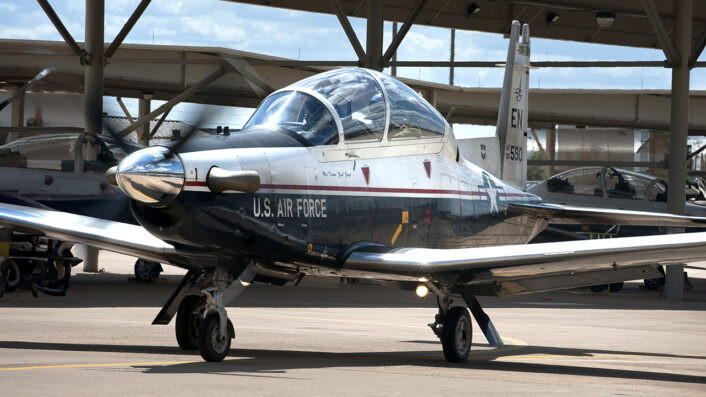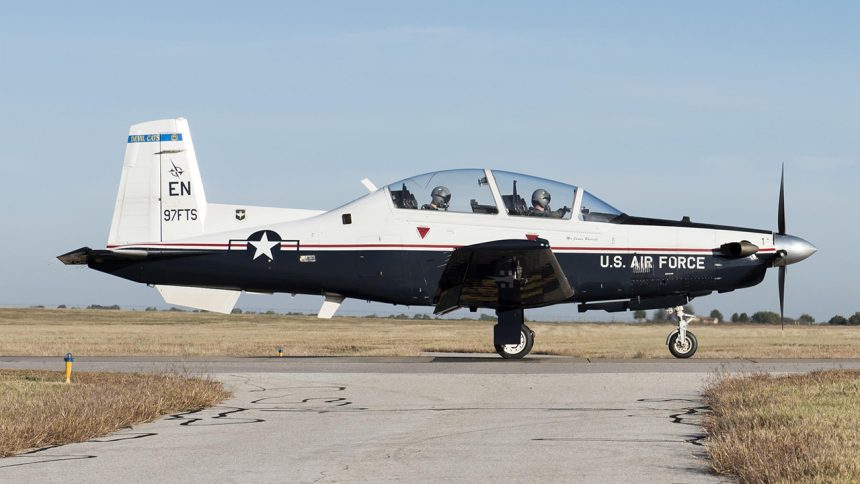The incident involved a T-6A Texan II at Sheppard Air Force Base, Texas.
A US Air Force instructor pilot from the 80th Flying Training Wing passed away on May 14, 2024, due to injuries caused by the activation of the T-6A Texan II ejection seat during ground operations on May 13, a press release from the 82th Training Wing Public Affairs announced.
An investigation has been launched to determine the causes of the incident.
The 80th Flying Training Wing is a key component of the Air Education and Training Command (AETC) part of the Euro-NATO Joint Jet Pilot Training (ENJJPT) program, the world’s only internationally managed and manned flying training program. The training program includes participants from 14 NATO member countries, including the United States, Germany, Italy, and Turkey and aims to standardize pilot training across NATO allies, fostering interoperability and cooperation among member nations.
The Wing operates two types of aircraft: the T-6A Texan II for primary flight training and the T-38C Talon for advanced jet training.
The T-6A Texan II
Initially identified in a 1989 Department of Defense Trainer Aircraft Master Plan as the aircraft portion of the Joint Primary Aircraft Training System (JPATS), the T-6A, officially named the Texan II in 1997, is a single-engine, two-seat primary trainer aircraft used to teach basic flying skills to students in the Joint Primary Pilot Training (JPPT) program for both the U.S. Air Force and Navy.
Manufactured by Raytheon Aircraft, the T-6A Texan II is a military training version of the Beech/Pilatus PC-9 Mk II.
The aircraft features stepped-tandem seating with interchangeable seats meaning that either the student or the instructor can fly from the front seat. Entry into the T-6A cockpit is via a side-opening, one-piece canopy that can withstand bird strikes at speeds up to 270 knots (320 mph).
Powered by a Pratt & Whitney Canada PT6A-68 turbo-prop engine that produces 1,100 horsepower, the T-6A boasts a high thrust-to-weight ratio, enabling it to climb at a rate of 3,100 feet per minute and reach an altitude of 18,000 feet in under six minutes.
The first operational T-6A was delivered to Randolph Air Force Base, Texas, in May 2000, and full-rate production began in December 2001. Production for the Air Force was completed in 2010.

Similar incidents
There have been several notable incidents involving the unintended activation of ejection seats on military aircraft while on the ground. These incidents can have serious, sometimes fatal consequences and this is the reason why, when on the ground, safety pins are used to prevent unwanted ejections.
Here are a few examples:
- Russian Tu-22M3 (2021): three crew members perished when they were ejected from Russian Air Force Tu-22M3 bomber, being prepared for take off at Shaikovka, a base located near Kaluga Oblast, in western Russia.
- RAF Hawk (2011): Red Arrows pilot Flight Lieutenant Sean Cunningham tragically lost his life when his ejection seat accidentally deployed while he was performing pre-flight checks on his stationary aircraft. This incident took place at RAF Scampton, the Red Arrows’ base in Lincolnshire, England.









